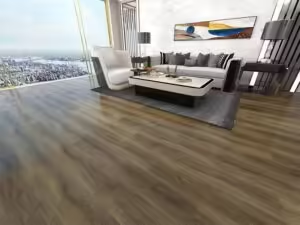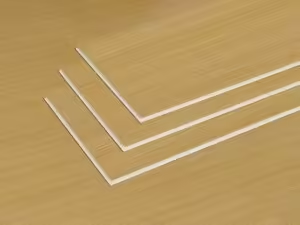Welcome to My Blog! 🌟
Before we dive into the content, let’s stay connected! Join me on my social media platforms where I share exclusive insights, engage with our amazing community, and post regular updates. Here’s how you can connect with me:
📘 Facebook: Follow Me on Facebook
Now, let’s embark on this journey together. I hope you find the content here insightful, engaging, and most importantly, valuable. Let’s explore, learn, and grow together! 🚀
Feel free to share your thoughts and feedback in the comments or on my social media—I’d love to hear from you! 😊
Table of Contents
Introduction

When planning a flooring upgrade, it’s easy to be overwhelmed by the numerous options available. Among modern solutions, SPC flooring (Stone Plastic Composite) has surged in popularity. However, not all products are created equal, and finding the best SPC flooring requires thoughtful research. This article breaks down critical aspects you should evaluate before purchasing, helping you make a confident, long-lasting investment.
What Makes the Best SPC Flooring Stand Out?
When shopping for flooring solutions, it’s easy to get overwhelmed by the wide variety of styles, finishes, and prices on the market. However, if you’re seeking a long-term investment in both appearance and performance, understanding what distinguishes the best SPC flooring from the rest is key. These high-performance options stand out due to several defining features that contribute to their reliability, beauty, and ease of use.
Durability and Wear Layer
A standout quality of superior SPC flooring is its enhanced durability, especially the wear layer, which plays a pivotal role in protecting the floor’s surface. The wear layer is a transparent top coat that guards against scratches, stains, dents, and general wear and tear.
While budget-friendly options might only feature a 6-mil wear layer, the best SPC flooring boasts wear layers starting from 12 mils and going up to 30 mils or more. Thicker wear layers are ideal for high-traffic areas, such as hallways, kitchens, and commercial spaces, as they ensure the floor maintains its appearance for years without frequent replacements or repairs.
Core Density
SPC stands for Stone Plastic Composite, and the core material significantly affects the product’s performance. The core is made by combining limestone powder (stone) with PVC (plastic), resulting in a dense, durable board that is rigid and dimensionally stable.
The best SPC flooring options are those that strike the perfect balance — a higher stone content typically results in a denser, more stable product. High core density ensures better resistance to temperature fluctuations, water damage, and structural deformation. This is particularly useful in environments with varying climate conditions or moisture-prone areas like basements and bathrooms.
Authentic Aesthetic Design
A high-quality floor should look as good as it performs. This is why aesthetics matter when choosing among flooring types. Top-rated SPC flooring features high-definition printing technology that delivers stunningly realistic visuals of wood, stone, or even ceramic tile.
Beyond print quality, the best SPC flooring incorporates embossed-in-register (EIR) textures that align perfectly with the printed grain or tile lines. This adds to the realism, giving the floor a natural look and tactile feel that mimics genuine hardwood or stone surfaces.
Color variety, plank width, surface finishes (matte, semi-gloss, etc.), and even edge treatments (beveled or square edges) contribute to the visual appeal, allowing homeowners to match the floor to any interior design style.
Installation System
Products with click-lock systems are easier to install and can reduce labor costs. The best SPC flooring often comes with advanced locking mechanisms for a more secure fit.
Attached Underlayment
Integrated underlayment not only speeds up installation but also enhances sound absorption and comfort underfoot. This is a feature commonly found in top-tier SPC flooring products.
Table: Quick Comparison of Best SPC Flooring Features
| Feature | Importance Level | Best-in-Class Specification |
|---|---|---|
| Wear Layer Thickness | High | 20 mils or more |
| Core Density | High | 2,000+ kg/m3 |
| Waterproof Capabilities | Essential | 100% Waterproof |
| Visual Realism | High | Embossed-in-register textures |
| Installation Method | Medium | Click-lock |
| Underlayment | High | Pre-attached EVA or IXPE foam |
Common Mistakes When Choosing SPC Flooring

While SPC flooring has become a top choice for homeowners and commercial projects due to its durability and water resistance, making the wrong selection can still lead to disappointing results. Many consumers focus primarily on surface aesthetics or initial costs, overlooking critical technical details that directly affect the flooring’s longevity and performance. Below are some of the most common mistakes people make—and how to avoid them.
Overlooking Core Composition
One of the most vital yet frequently ignored aspects of SPC flooring is the composition of its core. The acronym SPC stands for Stone Plastic Composite, which blends limestone and PVC to create a rigid, stable base layer. However, not all cores are created equal. Some manufacturers cut costs by reducing the stone powder ratio or substituting lower-grade PVC.
A less dense core may seem adequate on the surface but tends to warp, expand, or contract more easily under pressure, temperature changes, or long-term use. To ensure optimal performance, always check the product specifications for density ratings or inquire about the exact stone-to-plastic ratio. A high-quality core contributes significantly to impact resistance, overall weight support, and structural stability.
Ignoring Wear Layer Ratings
The wear layer is the transparent, protective surface on top of the design layer—and it’s a crucial indicator of how well your SPC flooring will handle traffic, abrasion, and daily wear. Yet, many buyers mistakenly choose products with a minimal wear layer to save money, unaware of the long-term consequences.
A thinner wear layer (e.g., 6 mils or less) may suffice in low-traffic areas but wears out quickly in active spaces, exposing the decorative layer beneath. For homes with pets, children, or heavy furniture—or for commercial settings—it’s wise to opt for a wear layer of at least 12 mils. Premium versions even offer 20 to 30 mils for maximum durability. In addition to thickness, check if the layer includes UV or stain protection to guard against fading and discoloration.
Skipping Warranty Details
Warranties often create a false sense of security—until it’s too late. Not all warranties are equal, and many have clauses that can void coverage due to improper installation, humidity exposure, or heavy-duty use.
For instance, some warranties apply only to residential installations and don’t extend to commercial or high-traffic environments. Others require the use of specific underlayments or adhesives, or mandate acclimatization periods before installation. Before you purchase any type of SPC flooring, take time to carefully read the warranty terms. Ensure it covers the areas where you plan to install the flooring and that you’re prepared to follow all required procedures to keep the warranty valid.
Failing to Match Room Requirements
A common mistake is choosing one type of SPC flooring and installing it uniformly across every room, regardless of that room’s environmental conditions. While the material is marketed as waterproof and stable, there are subtle differences between products designed for dry areas and those intended for spaces exposed to consistent moisture or temperature changes.
For example, bathrooms, kitchens, laundry rooms, and basements are high-moisture areas that demand flooring with excellent waterproofing and core density. On the other hand, bedrooms or office spaces may benefit from features like thicker underlayment for better soundproofing. The best SPC flooring solutions take into account the specific functional needs of each space—so should your selection process.
How to Choose the Best SPC Flooring for Your Space

Selecting the Best SPC Flooring for your space involves more than just picking a design you like. To ensure long-term durability, visual appeal, and functional performance, it’s essential to consider the specific needs of each room, environmental conditions, and your installation capabilities. Here’s a detailed guide to help you make a well-informed decision when shopping for Best SPC Flooring.
Assess Room Usage
Not all rooms in a home or commercial property experience the same level of activity. High-traffic areas such as kitchens, hallways, and living rooms endure more wear and tear, so the Best SPC Flooring choices for these spaces typically include thicker wear layers—usually 20 mils or more—to protect against scratches, dents, and daily foot traffic.
Conversely, spaces like bedrooms, guest rooms, or home offices can prioritize visual appeal and comfort over heavy-duty resilience. Here, you can choose Best SPC Flooring options that feature more intricate designs, lighter wear layers, or integrated underlayment for added softness and sound absorption.
Evaluate Moisture Exposure
One of the standout features of Best SPC Flooring is its resistance to water, making it an excellent choice for moisture-prone environments. However, not all SPC floors offer the same level of protection. When planning installation in bathrooms, laundry rooms, mudrooms, or basements, it’s critical to choose flooring specifically labeled as 100% waterproof.
Look for SPC planks with enhanced waterproof cores and sealed edges to prevent water infiltration. This ensures your flooring won’t warp, swell, or detach over time. The Best SPC Flooring for these wet areas will also include mold- and mildew-resistant properties for added peace of mind.
Factor in Aesthetic Goals
While functionality is key, the visual appeal of your floor plays a big role in your final selection. The Best SPC Flooring combines cutting-edge printing technology with textured embossing to replicate the authentic look of hardwood, stone, or ceramic—without the upkeep.
If you’re looking to create a rustic, natural, or contemporary vibe, choose flooring that offers wide plank formats, hand-scraped finishes, or multi-tone patterns. A high-quality SPC floor should not only perform well but also elevate your room’s design. When comparing options, the Best SPC Flooring will balance aesthetic realism with practical benefits.
Check Compatibility With Subfloors
Before installing any type of SPC flooring, it’s important to assess the condition of your existing subfloor. The Best SPC Flooring will offer some forgiveness for minor imperfections, especially those with rigid cores and integrated underlayment. However, highly uneven or unstable subfloors may still require leveling or additional materials to ensure proper installation.
Confirm whether your subfloor is concrete, plywood, tile, or another material. Most Best SPC Flooring options are compatible with a wide range of subfloor types, but always consult the manufacturer’s installation guide to avoid costly mistakes. Ensuring compatibility helps maintain the flooring’s structural integrity and extends its lifespan.
Consider Installation Skills
If you’re planning to install your flooring yourself, your choice should focus on ease of installation. The Best SPC Flooring products often feature click-lock systems that allow planks to snap together without glue or nails. These floating floor systems are especially convenient for DIYers, reducing labor time and costs.
Additionally, many premium products come with pre-attached underlayment, which enhances comfort, absorbs sound, and saves time during setup. Choosing the Best SPC Flooring with user-friendly installation features can simplify your renovation project while delivering professional-grade results.
Conclusion
Selecting the best SPC flooring doesn’t have to be daunting. By focusing on features like wear layer thickness, core density, and waterproof performance, you can find a product that matches both your functional needs and aesthetic vision. Avoid shortcuts and pay attention to specifications to ensure long-term satisfaction. Invest wisely, and your floors will reward you with beauty and durability for years to come.
FAQ
Q1: What is the average lifespan of the best SPC flooring?
A: With proper care, top-quality SPC flooring can last 15–20 years or longer.
Q2: Can I install SPC flooring over radiant heating?
A: Yes, most high-grade SPC flooring is compatible with radiant heat, but always check the manufacturer guidelines.
Q3: Is SPC flooring truly waterproof?
A: Yes, SPC cores are completely waterproof, making them ideal for wet areas.
Q4: Does SPC flooring need underlayment?
A: Many premium SPC planks come with attached underlayment. If not, you may need a separate moisture barrier.
Q5: How does SPC compare to traditional vinyl flooring?
A: SPC offers better rigidity, durability, and temperature resistance due to its stone-plastic core.
